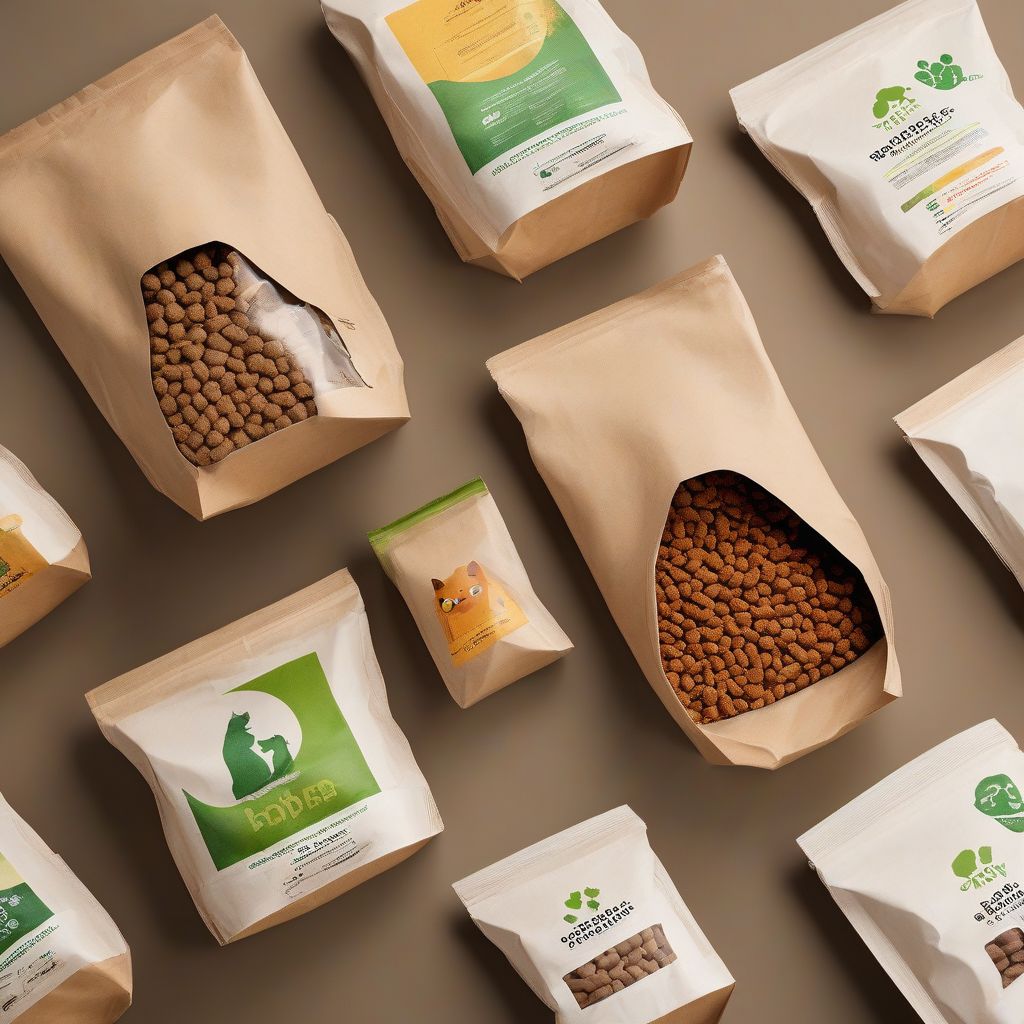Have you ever stopped to think about the environmental paw print your furry friend leaves behind? As pet parents, we shower our companions with love, but that love should also extend to the planet they romp around on. Choosing eco-friendly pet food is one meaningful way to minimize their impact. But with so many brands touting sustainability, how can you sniff out the truly responsible ones?
Don’t worry, fellow pet parent! This guide will equip you with the knowledge to confidently navigate the world of eco-friendly pet food brands and suppliers. Let’s dig in!
Understanding the Environmental Impact of Pet Food
Before we embark on our quest for the best eco-friendly options, let’s paws and reflect on why this matters. Traditional pet food production, particularly conventional meat-based diets, contributes significantly to:
- Greenhouse Gas Emissions: Livestock agriculture, a major ingredient source for pet food, is a substantial contributor to greenhouse gas emissions, primarily methane.
- Deforestation: Expanding agricultural land for livestock feed often leads to deforestation, further exacerbating climate change.
- Overfishing: Many pet foods rely heavily on fish, and unsustainable fishing practices deplete our oceans.
- Packaging Waste: The mountains of plastic pet food bags end up in landfills, taking hundreds of years to decompose.
Key Factors to Consider When Choosing Eco-Friendly Pet Food
Now that we understand the stakes let’s explore the key factors to consider when evaluating pet food brands and suppliers for their environmental responsibility.
1. Ingredient Sourcing
- Sustainably Sourced Protein: Look for brands that prioritize sustainably sourced protein, such as:
- Insect Protein: Insects are incredibly efficient at converting feed into protein and require far less land and water than traditional livestock.
- Plant-Based Protein: Plant-based options like pea protein and lentil protein offer a lower environmental impact compared to meat-based diets.
- Responsibly Sourced Meat: If you choose meat-based pet food, look for certifications like Global Animal Partnership (GAP) or Certified Humane, which indicate higher animal welfare standards.
- Sustainable Agriculture Practices: Support brands committed to sustainable agriculture practices, such as regenerative agriculture, which helps sequester carbon in the soil.
- By-Product Utilization: Opt for brands that utilize by-products from human-grade food production, minimizing waste.
2. Packaging
- Recyclable Packaging: Choose brands that use recyclable packaging materials, such as paper-based bags or pouches made from recycled plastic.
- Compostable Packaging: Look for brands offering compostable packaging, which breaks down naturally in composting systems.
- Bulk Purchasing Options: Consider purchasing pet food in bulk to reduce the overall packaging consumption.
3. Manufacturing Processes
- Renewable Energy Use: Support brands that power their manufacturing facilities with renewable energy sources, like solar or wind power.
- Water Conservation Efforts: Look for brands that prioritize water conservation during their production processes.
- Waste Reduction Strategies: Opt for brands that have implemented effective waste reduction strategies in their manufacturing plants.
4. Certifications and Labels
- Third-Party Certifications: Look for certifications from reputable organizations like:
- B Corp Certification: This certification verifies a company’s commitment to social and environmental responsibility.
- Certified Carbon Neutral: This certification indicates that a company offsets its carbon emissions.
- Ocean Wise: For seafood-based pet food, look for the Ocean Wise symbol, which indicates sustainably sourced seafood.
- Transparency and Traceability: Choose brands that are transparent about their sourcing and manufacturing processes. Look for information on their website or contact their customer service for details.
 Eco-Friendly Pet Food Packaging
Eco-Friendly Pet Food Packaging
5. Company Values
- Mission and Values Alignment: Research the company’s mission and values to ensure they align with your environmental concerns.
- Community Engagement: Support brands actively involved in environmental initiatives or animal welfare organizations.
Navigating Eco-Friendly Claims
In the crowded marketplace, greenwashing—making misleading or exaggerated environmental claims—is a growing concern. Here’s how to spot and avoid greenwashing:
- Vague or Unsubstantiated Claims: Be wary of brands making broad claims like “eco-friendly” or “sustainable” without providing specific evidence or certifications.
- Focus on a Single Attribute: Be cautious if a brand heavily promotes a single eco-friendly attribute, such as recyclable packaging, while overlooking other crucial factors like ingredient sourcing.
- Lack of Transparency: Avoid brands that are not transparent about their practices or hesitant to provide detailed information about their supply chains.
Making the Switch to Eco-Friendly Pet Food
Transitioning your pet to a new food should always be done gradually to avoid digestive upset.
- Gradual Transition: Start by mixing a small amount of the new food with your pet’s current food, gradually increasing the ratio of the new food over 7-10 days.
- Monitor Your Pet’s Health: Observe your pet closely during the transition for any signs of digestive issues or allergies. Consult with your veterinarian if you notice any concerns.
The Bottom Line: Nourishing Your Pet and the Planet
Choosing eco-friendly pet food is a powerful way to minimize your pet’s environmental impact while providing them with the nourishment they need to thrive. By understanding the key factors to consider, navigating greenwashing tactics, and making a gradual transition, you can make responsible choices that benefit your furry friend and the planet we share.
Remember, every small step counts! By making conscious decisions about the products we purchase for our pets, we contribute to a healthier and more sustainable future for generations of pets to come.
Do you have any questions about selecting eco-friendly pet food brands and suppliers? Share your thoughts and experiences in the comments below!
[amazon bestseller=”eco-friendly dog food”]
